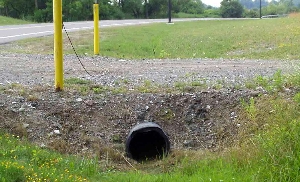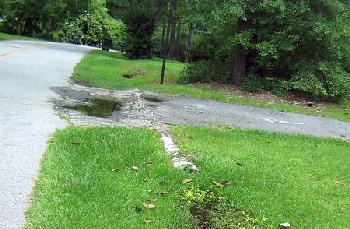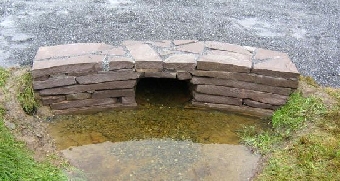 Culverts are pipes that convey drainage water under roads or driveways. They are an ideal solution to manage excess flow and prevent downstream flooding and erosion along a roadway. They allow water to flow under a driveway or a roadway with minimum obstruction, while still providing access to your home.
Culverts are pipes that convey drainage water under roads or driveways. They are an ideal solution to manage excess flow and prevent downstream flooding and erosion along a roadway. They allow water to flow under a driveway or a roadway with minimum obstruction, while still providing access to your home.
INDOT wants to help you keep your culvert running properly, since Indiana Code states it is the responsibility of residence and business owners to maintain driveway culverts leading to their property.
 The best time to inspect and clean your culvert is in the spring after the winter thaw and before the summer thunderstorm season arrives.
The best time to inspect and clean your culvert is in the spring after the winter thaw and before the summer thunderstorm season arrives.
Make sure there is no blockage at either end of the culvert and check the accumulation of debris, silt or other flow impediments. Use a shovel to clear debris. The bottom of the ditch should be at the same level as the bottom of the culvert. Inspect the culvert barrel, if possible, for roots, mineral deposits, trash or other foreign objects that could obstruct water flow. Also examine inlet and outlet areas for evidence of soil erosion. Soil erosion quickly leads to reduced structural and hydraulic performance. Inspect all visible structures such as sumps, headwalls, wing walls, culverts and aprons for sign of wear or breakage. Check upstream for evidence of backup or prolonged surface water presence that could result in reduced inflow. If sediment has built up inside the culvert, you may need to call a professional to remove the sediment.
 Plugged culverts can cause property damage, restrict vehicle access and cost you money.
Plugged culverts can cause property damage, restrict vehicle access and cost you money.














